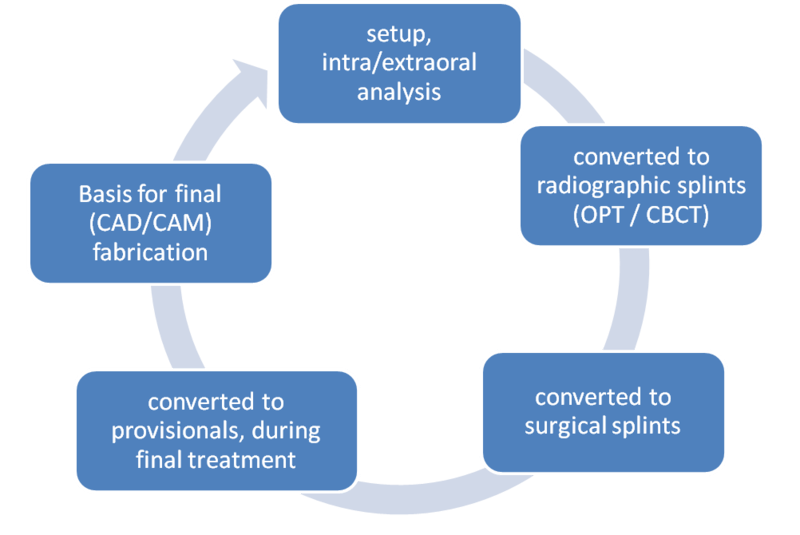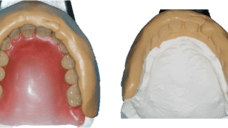-
0
Patient Assessment
- 0.1 Patient demand
- 0.2 Overarching considerations
- 0.3 Local history
- 0.4 Anatomical location
- 0.5 General patient history
-
0.6
Risk assessment & special high risk categories
- 5.1 Risk assessment & special high risk categories
- 5.2 age
- 5.3 Compliance
- 5.4 Smoking
- 5.5 Drug abuse
- 5.6 Recreational drugs and alcohol abuse
- 5.7 Parafunctions
- 5.8 Diabetes
- 5.9 Osteoporosis
- 5.10 Coagulation disorders and anticoagulant therapy
- 5.11 Steroids
- 5.12 Bisphosphonates
- 5.13 BRONJ / ARONJ
- 5.14 Radiotherapy
- 5.15 Risk factors
-
1
Diagnostics
-
1.1
Clinical Assessment
- 0.1 Lip line
- 0.2 Mouth opening
- 0.3 Vertical dimension
- 0.4 Maxillo-mandibular relationship
- 0.5 TMD
- 0.6 Existing prosthesis
- 0.7 Muco-gingival junction
- 0.8 Hyposalivation and Xerostomia
- 1.2 Clinical findings
-
1.3
Clinical diagnostic assessments
- 2.1 Microbiology
- 2.2 Salivary output
-
1.4
Diagnostic imaging
- 3.1 Imaging overview
- 3.2 Intraoral radiographs
- 3.3 Panoramic
- 3.4 CBCT
- 3.5 CT
- 1.5 Diagnostic prosthodontic guides
-
1.1
Clinical Assessment
-
2
Treatment Options
- 2.1 Mucosally-supported
-
2.2
Implant-retained/supported, general
- 1.1 Prosthodontic options overview
- 1.2 Number of implants maxilla and mandible
- 1.3 Time to function
- 1.4 Submerged or non-submerged
- 1.5 Soft tissue management
- 1.6 Hard tissue management, mandible
- 1.7 Hard tissue management, maxilla
- 1.8 Need for grafting
- 1.9 Healed vs fresh extraction socket
- 1.10 Digital treatment planning protocols
- 2.3 Implant prosthetics - removable
-
2.4
Implant prosthetics - fixed
- 2.5 Comprehensive treatment concepts
-
3
Treatment Procedures
-
3.1
Surgical
-
3.2
Removable prosthetics
-
3.3
Fixed prosthetics
-
3.1
Surgical
- 4 Aftercare
Wax-up, arrangement, mock-up
Key points
- A diagnostic tooth arrangement is an important guide to plan and manage patient treatment and expectations
- A proper wax up can significantly add to the value of a diagnostic arrangement as it better simulates both provisional and final prostheses
- Whenever possible, it is preferable and advisable to use a mock-up that involves intra-oral evaluation of a diagnostic tooth arrangement and wax-up
Diagnostic, treatment planning and patient communication tools
Treatment planning for the edentulous patient requires a diagnostic tooth arrangement which provides valuable information for pre-surgical planning (surgical guide fabrication), facilitates discussion regarding patient mediated concerns and expectations, and ensures optimal guidelines for the eventual prosthesis fabrication.
Tooth arrangement should take into account patient expectations, functional considerations and esthetic goals. A mismatch between these three elements at the diagnostic phase demands an altered treatment approach so as to provide a match with the patient expactations.

Wax-up and mock-up
Proper simulation of gingival morphology and palatal contours are valuable aids, that guide the dentist's choice in the selection of the best possible treatment plans to present to the patient.
The try-in of a diagnostic or provisional waxed-up teeth arrangement offers the patient early insight into a likely treatment outcome. It also permits crucial input into finalization of a treatment plan. Modifications of this provisional teeth arrangement may of course be necessary in order to achieve patient acceptance of a proposed treatment plan. This protocol can prevent a patient’s misperceptions of care and increase the probability of a satisfactory outcome. The inability to find a diagnostic teeth arrangement that pleases the patient should be a cause of concern as to whether treatment should proceed.
In addition, the try-in protocol can be used to recruit all of the acquired relevant information to guide the fabrication of either a surgical guide and/or a provisional or definitive prosthesis.

